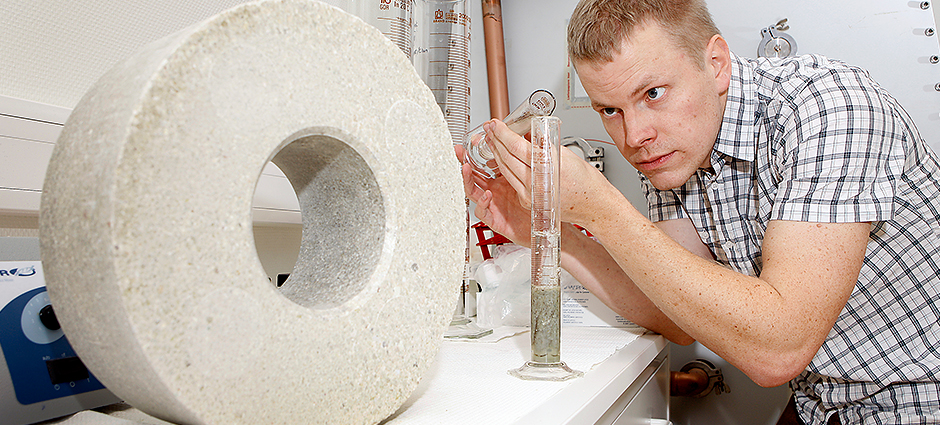Material Science Laboratory
There are remaining challenges regarding the bentonite buffer and backfill materials when it comes to research related to long term safety assessment, as well as industrial scale quality control of central safety parameters.
As a part of the needed infrastructure, a material science laboratory has been constructed at Äspö, with focus on material chemistry of bentonite issues and competence development. The key focus areas are long term safety related research and development of methods for quality control of the bentonite buffer and backfill materials.
Objectives
The quality control development is conducted within the Material Science project with the goal of method documents describing the laboratory measurements of key parameters such as montmorillonite content, organic carbon, total sulphur content, hydraulic conductivity and swelling pressure. The long term stability of various bentonites is studied within the Alternative Buffer Material (ABM) project conducted within the Research and Safety Assessment line work. The second ABM-package (ABM2) was excavated in April 2013 and already in October 2013 results based on internal work at Äspö were presented at the Clay Minerals Society conference in Urbana-Champaign, USA, with a high acceptance of the quality of the work. Beside of the key areas, various more or less related works in different fields is conducted with the purpose of competence development and problem solving in other projects or areas of SKB.
A number of methods and equipments have been implemented and developed. Wet chemical methods such as cation exchange capacity (CEC) and exchangeable cations (EC) have been implemented. Equipments implemented during 2013 are X-ray diffraction (XRD) for the determination of crystalline solids, X-ray fluorescence (XRF) spectroscopy for elemental compositon, Fourier Transformed IR (FT IR) spectroscopy for detailed analysis of the clay mineral structure and amorphous material, and UV/Vis for the CEC method. A μ-Raman equipment has been installed as a complement for analysis of corrosion products, accessory minerals and precipitates all with a very high spatial resolution in a non destructive manner. Swelling pressure and hydraulic conductivity measurements are in the construction phase. An example of the kind of results one can obtain by combining high resolution polarisation microscopy with µ-RAMAN is that hematite was identified as minor red sections within a 50 µm small particle inside of the bentonite clay.
